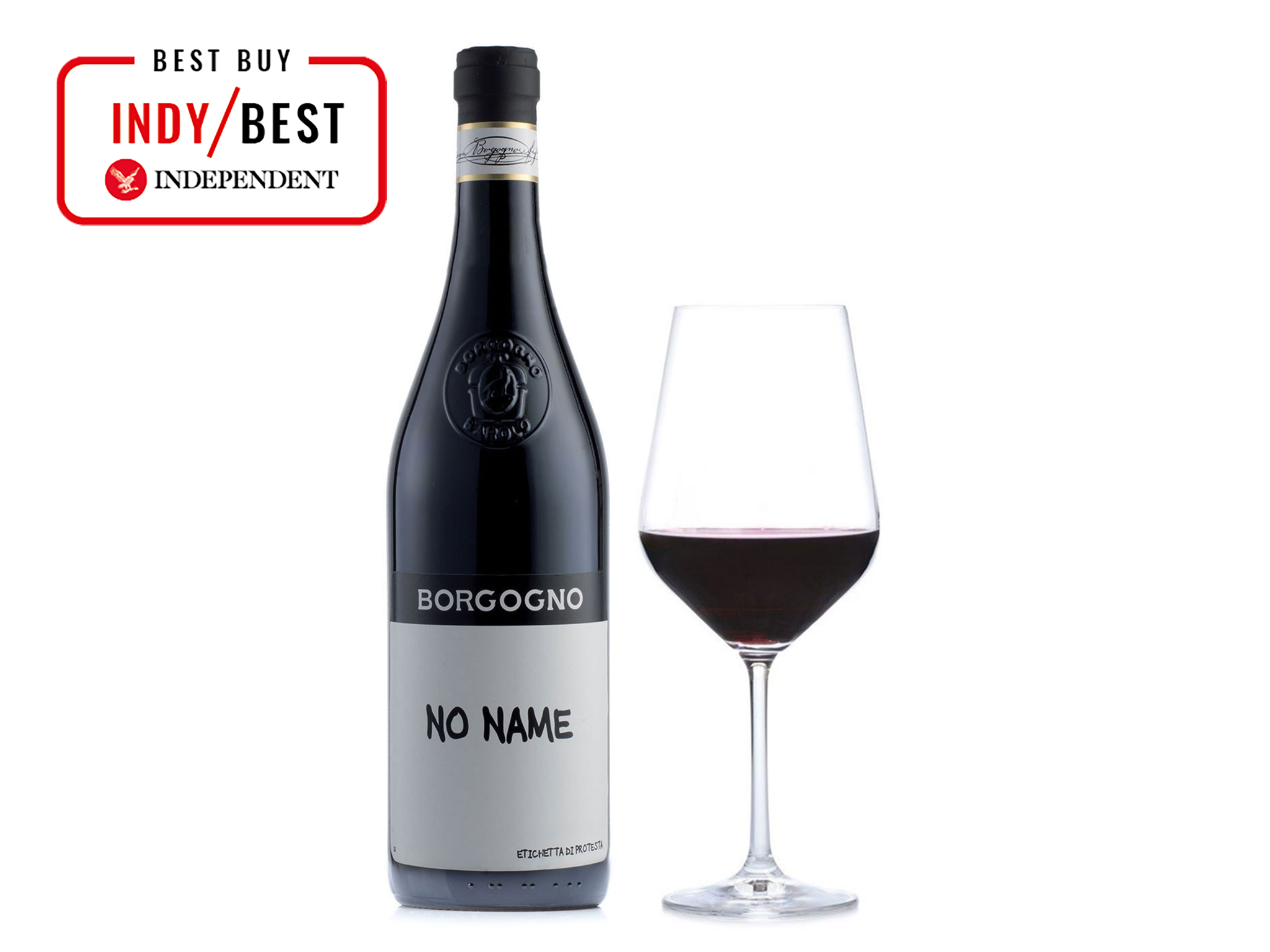
The Independent's journalism is supported by our readers. When you purchase through links on our site, we may earn commission. Why trust us?
11 best Italian wines that are worth celebrating, from fruity reds to feather-light whites
Our top sippers from Tuscany, Piedmont and Abruzzo
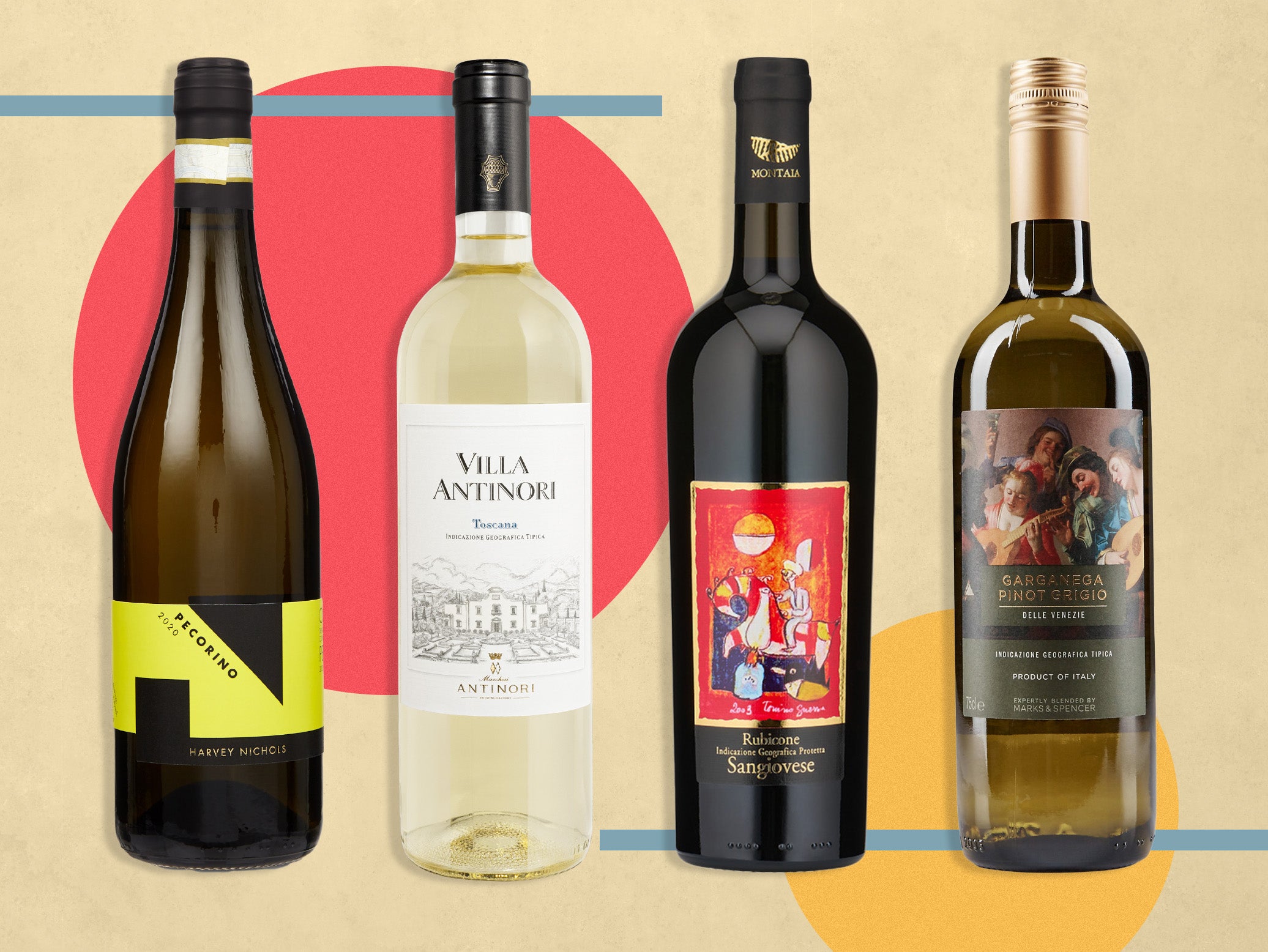
Known for wines including pinot grigio, barolo and chianti, Italy is the world’s leading producer of wine and also one of the oldest wine-making countries.
Wine is produced in every one of the country’s 20 regions, from Piedmont and Veneto in the north to the island of Sicily in the south. Both the climate and location are perfect for growing grapes, with nearly 600 unique varieties – more than Greece, Spain and France combined.
Though Italy also makes excellent wine using international grapes, including chardonnay and merlot, its best-known bottles are produced using indigenous grapes. These include classic red wines such as chianti from the sangiovese grape and barolo from the nebbiolo grape, plus white wines such as gavi from the cortese grape.
While lesser-known grape varieties are often produced in smaller quantities – and can be expensive – it’s easy to find bottles of Italy’s most famous wines for very reasonable prices. All work well with typical Italian food, including pizzas, meat stews and pasta.
Be aware that the highest-grade wines will often include the letters DOCG (designation of controlled origin and guaranteed) on the label, meaning the wine comes from a very specific area and is made in line with strict regulations. DOC wines and then IGT wines follow, both of which must come from a certain area and follow certain rules. Yet more than half of Italian wine have no classification at all, making it more affordable yet still extremely drinkable.
Read more:
How we tested
We got uncorking and started swirling and sipping. We tested each wine on its own, considering its colour, viscosity and smell before judging each on its taste. We then tested all the reds alongside each other, before doing the same with the whites to find our ultimate Italian favourites.
The best Italian wines for 2022 are:
- Best overall – Borgogno no name langhe nebbiolo: £34.90, Eataly.com
- Best barolo – Tesco Finest barolo DOCG: £19, Tesco.com
- Best organic – Giribaldi ‘caj’ barbera d’Alba superiore DOC 2019: £15, Wickhamwine.co.uk
- Best for display – Montaia sangiovese IGP rubicone: £9.99, Wickhamwine.co.uk
- Best pinot grigio upgrade – Fontanafredda gavi : £16.90, Eataly.com
- Best with pizza – Adnams montepuliciano d’Abruzzo DOC: £7.99, Adnams.co.uk
- Best classic white – Villa Antinori bianco Toscana: £10.99, Waitrose.com
- Best new grape to try – Harvey Nichols pecorino 2020: £13.95, Harveynichols.com
- Best to go with anything – M&S garganega pinot grigio, for a case of 6: £42, Marksandspencer.com
- Best with tomato pasta - Villa Longobardi chianti: £8.75, Coop.co.uk
- Best for a special occasion – Antinori cervaro della salla 2020, for a case of 6: £340, Bordeauxindex.com
Borgogno no name langhe nebbiolo

Best: Overall
Rating: 9/10
- ABV: 14.5%
- Size: 75cl
Bamboozled by the strict rules of Italian wine-making? This is the wine for you. First made as a barolo but in a softer style, it was declassified by the appellation authorities and now exists as a langhe nebbiolo in protest at the bureaucracy of the country’s wine industry. It asks the drinker to savour the wine as it is instead of being guided by classifications.
And what a wine it is. Borgogno is the most historic winery in Barolo, producing wine since 1761 using traditional methods with long spontaneous fermentation in concrete tanks and ageing in large Slavonian oak barrels. Today, they don’t use any chemical fertilisers or herbicides and practice eco-friendly treatments.
The nebbiolo grapes used in this ground-breaking wine come from all the estate’s vineyards, which produce the best crus in the Barolo area: Liste, Cannubi San Lorenzo, Fossati and San Pietro delle Viole. Clear ruby red with purple undertones, it is gorgeously soft and spicy, with notes of violets and cherries and as smooth as velvet. Hide it away when you buy it: it’s far too good to be shared.
Tesco Finest barolo DOCG
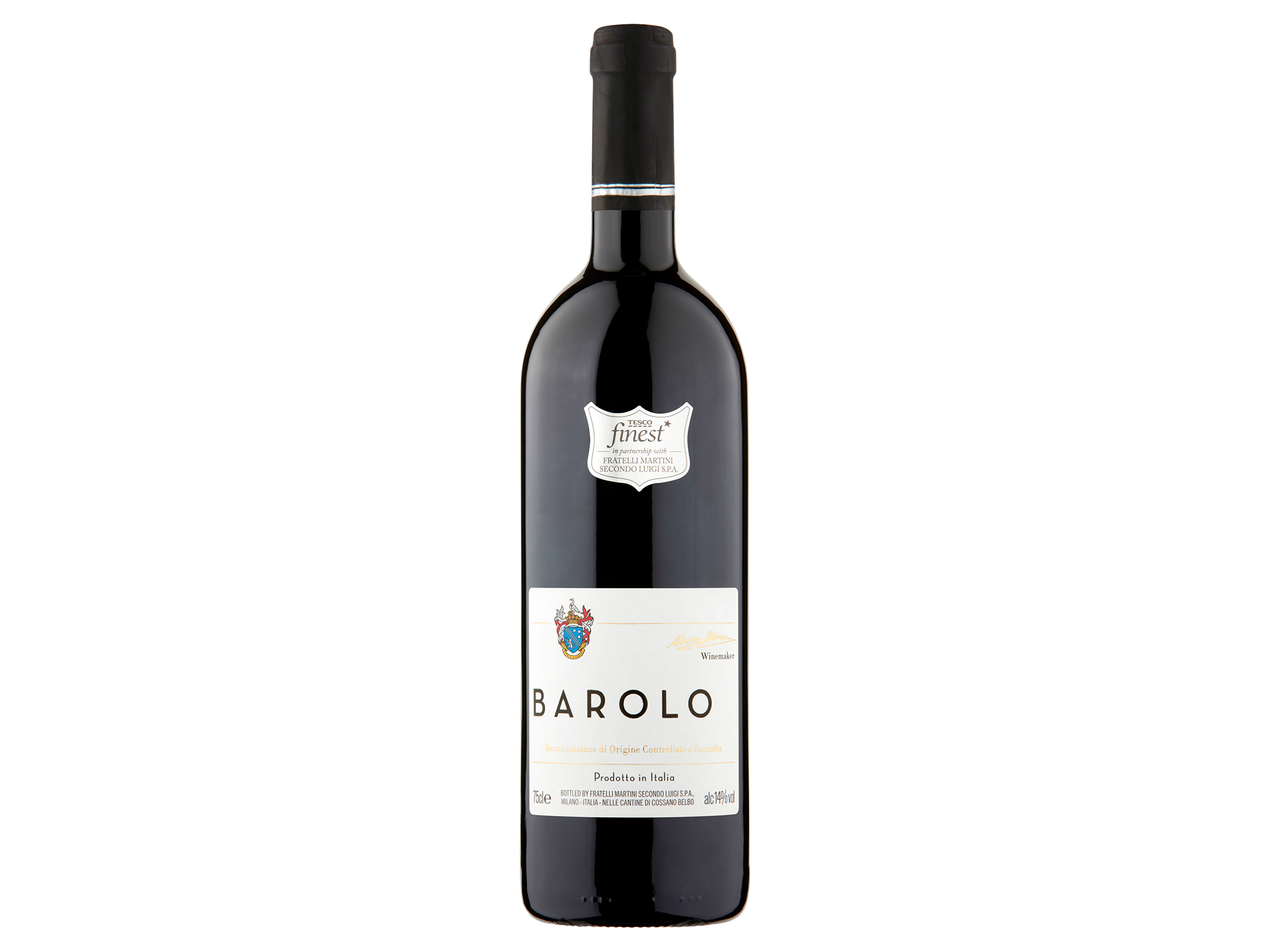
Best: Barolo
Rating: 9/10
- ABV: 14%
- Size: 75cl
Any lover of red wine knows barolo is the boss. Widely considered one of the world’s best wines, it is always a DOCG and made in a sub-region in Piedmont with 100 per cent nebbiolo grapes and aged by law for at least three years. Known for its high tannin levels, it is produced to strict rules and must spend at least 18 months in oak or chestnut barrels and longer still in the bottle before drinking. Yet older barolos can be seriously pricey. And let’s be honest, most of us don’t have the willpower (or space) to store a bottle for a decade before drinking.
If you want to swoon over Barolo right now without breaking the bank, this bottle is an excellent buy. Aged in oak casks for 18 months, it’s from the 2017 vintage so is perfect for drinking right now and a real treat for any fan of red. Powerful and perfumed, it has punchy tannins, typically high acidity and a mouth-filling rush of red fruits, hints of cloves and even sweet vanilla. It would be divine with a steaming bowl of beef stew on a cold day, but leave it to breathe for at least half an hour before serving to enjoy it at its best.
Giribaldi ‘caj’ barbera d’Alba superiore DOC 2019
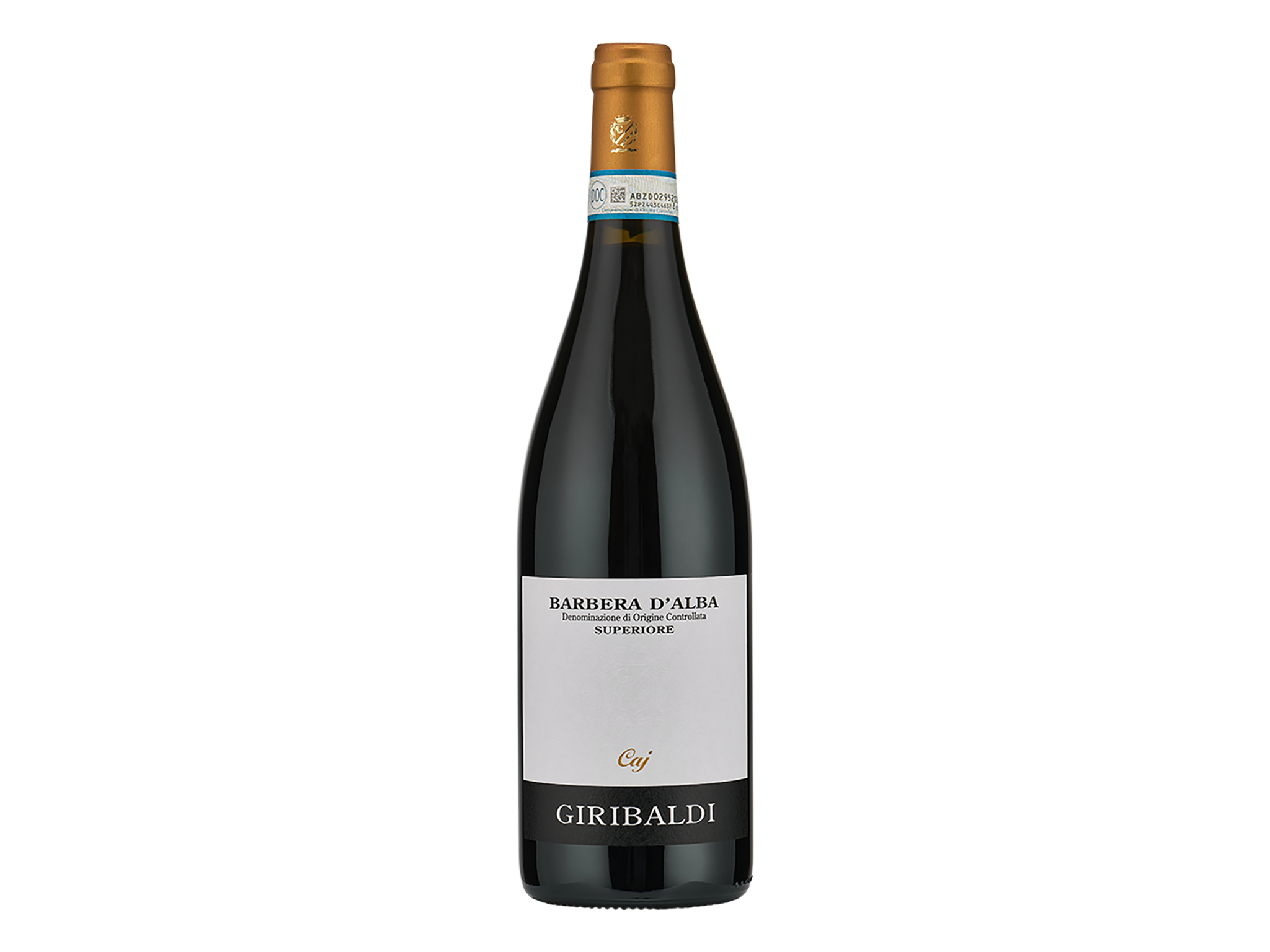
Best: Organic
Rating: 9/10
- ABV: 14%
- Size: 75cl
You can almost taste the history in this bottle. Giribaldi is a family-owned winery that has been producing wine since the start of the 20th century and started making organic wine specifically 20 years ago. Now, produced by Mario Giribaldi, this excellent barbera is from a small single vineyard called “caj” in Alba, nearly 400 metres above sea level.
Barbera is typically light and refreshing, despite its dark colour, and this one is deliciously fruity. It’s packed with lip-smacking flavours of cherries, mulberries and a hint of cassis but has a warm spice underpinning it all thanks to eight months in oak barrels. Easy to sip on its own, we’d also serve it with a juicy steak or even a sausage casserole. If you’d prefer an organic white, try the lightly acidic Giribaldi “irisi” DOCG 2021 (£17, Wickhamwine.co.uk) for a fresh but complex alternative to your go-to pinot grigio.
Montaia sangiovese IGP rubicone
Best: For display
Rating: 8/10
- ABV: 12.5%
- Size: 75cl
If you believe opening a good bottle of wine should be savoured, this is the bottle to choose. The garden of Italy selection from Wickhams includes six bottles from the Montaia vineyard based in the Cesena foothills of Northern Italy where the sea breeze from the nearby Adriatic Sea creates the ideal microclimate for winemaking. All the bottles feature striking labels using designs by celebrated poet and painter, Tonino Guerra, who was a fan of Montaia wines.
Though it was hard to choose a standout wine from the excellent range, this easy-drinking red is a dream with food. A ruby sangiovese, it has been fermented at a controlled temperature in steel tanks and matured in small oak casks for an elegant, tangy taste with a subtle tannin. It’s substantial enough to hold its own with red meats – and even cheeses –but lively cherry and strawberry aromas mean it works lightly chilled for summer sipping too. We’d recommend trying the equally delicious Montaia gnoletto DOC vino frizzante too (£13.50, Wickhamwine.co.uk), a semi-sparkling dry white produced using only Pignoletto grapes grown in the region since the Roman Empire.
Fontanafredda gavi
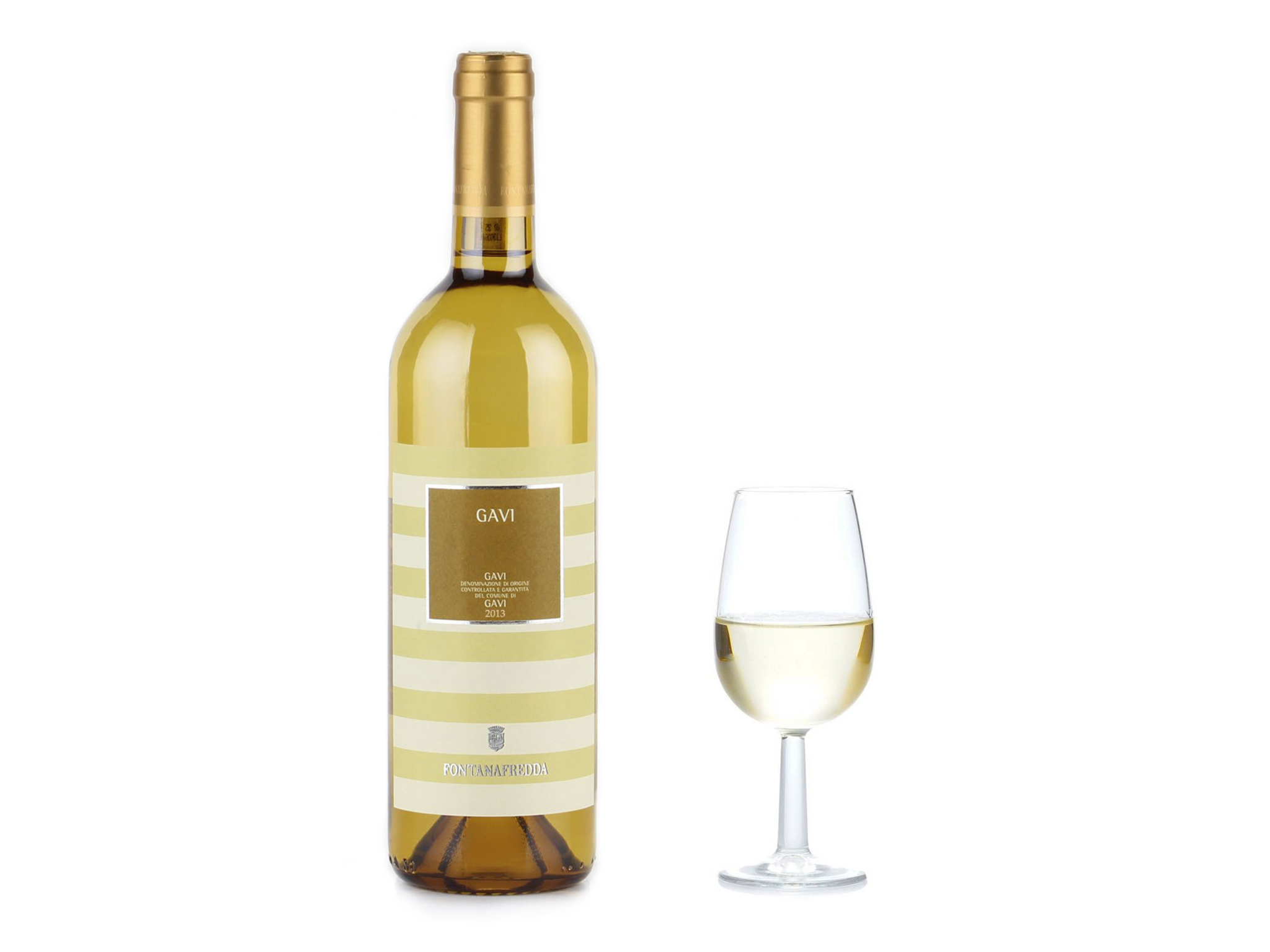
Best: Pinot grigio upgrade
Rating: 8/10
- ABV: 12.5%
- Size: 75cl
There’s more to Italian whites than pinot grigio and soave. The largely underrated gavi is made from the grape cortese (or cortese di gavi), which has been grown in Piedmont since the 17th century and has DOCG classification. It’s usually fresh and fruity, generally unoaked and nicely crisp, working well with food including fish, white meat and pesto.
This fragrant example comes from the family-owned Fontanafredda estate in the Langhe hillsides that once belonged to King Vittorio Emanuele II, the first king of Italy. He gave the land as a gift to Rosa Vercellana, a commoner who was the love of his life. Their son, Emanuele Guerreri, Conte di Mirafiore, founded the winery, and it now covers 300 acres of organic vineyards. It is renowned for its top barolo. This straw-yellow gavi is just as notable, with a delicate flavour of white fruits that is feather-light to drink.
Adnams montepuliciano d’Abruzzo DOC
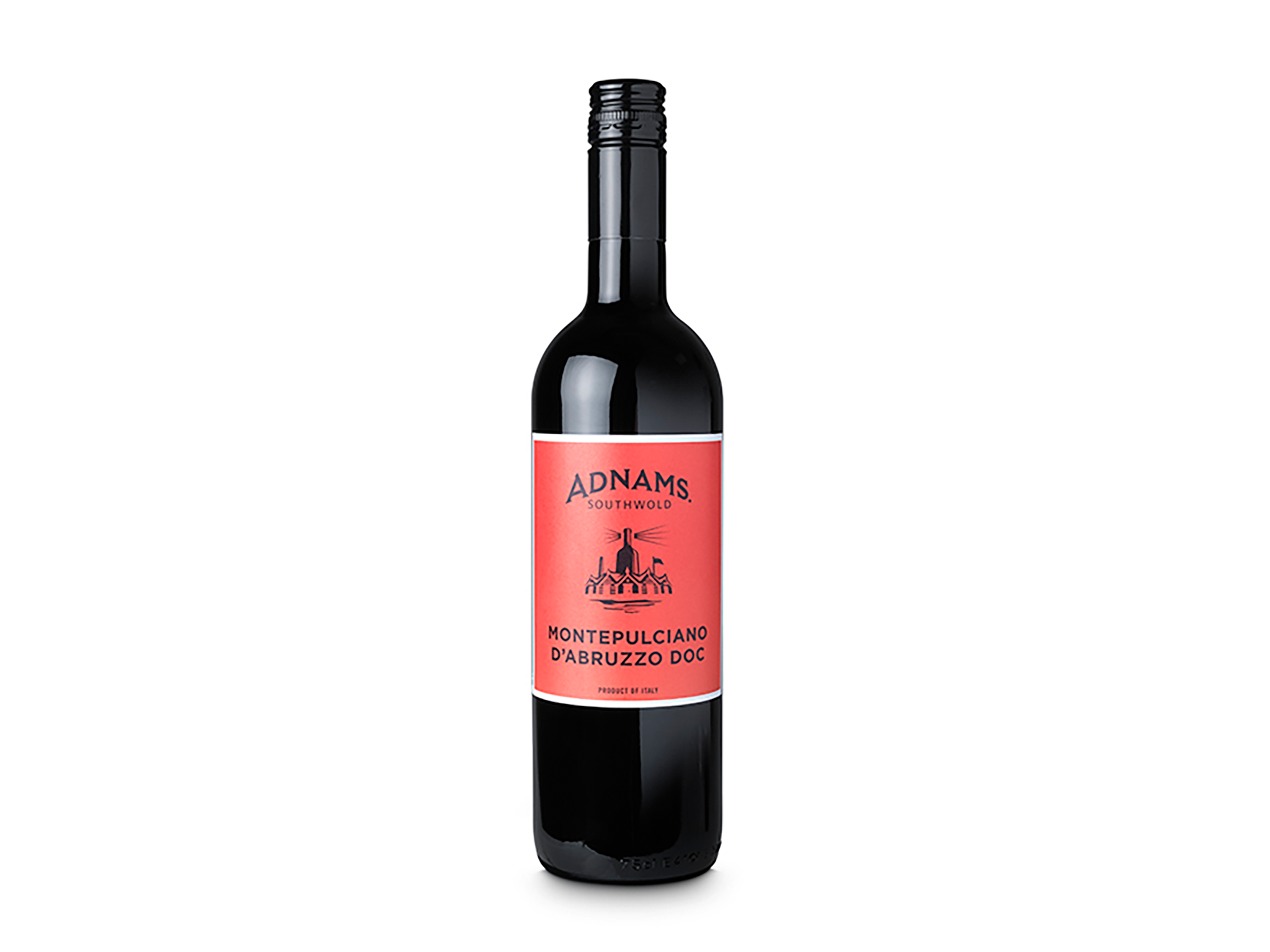
Best: With pizza
Rating: 8/10
- ABV: 13%
- Size: 75cl
There’s no better match with a freshly cooked pizza than a fruity red wine. This is a fantastically priced example of one of Italy’s most famous and most exported grape varieties – montepulciano. Rules demand that wine made as montepulciano d’Abruzzo DOC must contain at least 85 per cent montepulciano grapes, while the rest comes from other red grapes also grown in Abruzzo.
Full-bodied with soft tannins, this wine is astonishingly impressive for the money, good enough for a special occasion yet with a pleasingly everyday price tag. Packed full of fruity blackberry and cherry flavours, it has an intriguing shot of spice and decent acidity which makes it perfect alongside tomato-based pasta dishes or pizza.
Dedicated white drinkers should also try Adnams roero arneis DOCG instead (£13.99, Adnams.co.uk), a fresh, tropical wine produced using eco-friendly and sustainable methods.
Villa Antinori bianco Toscana
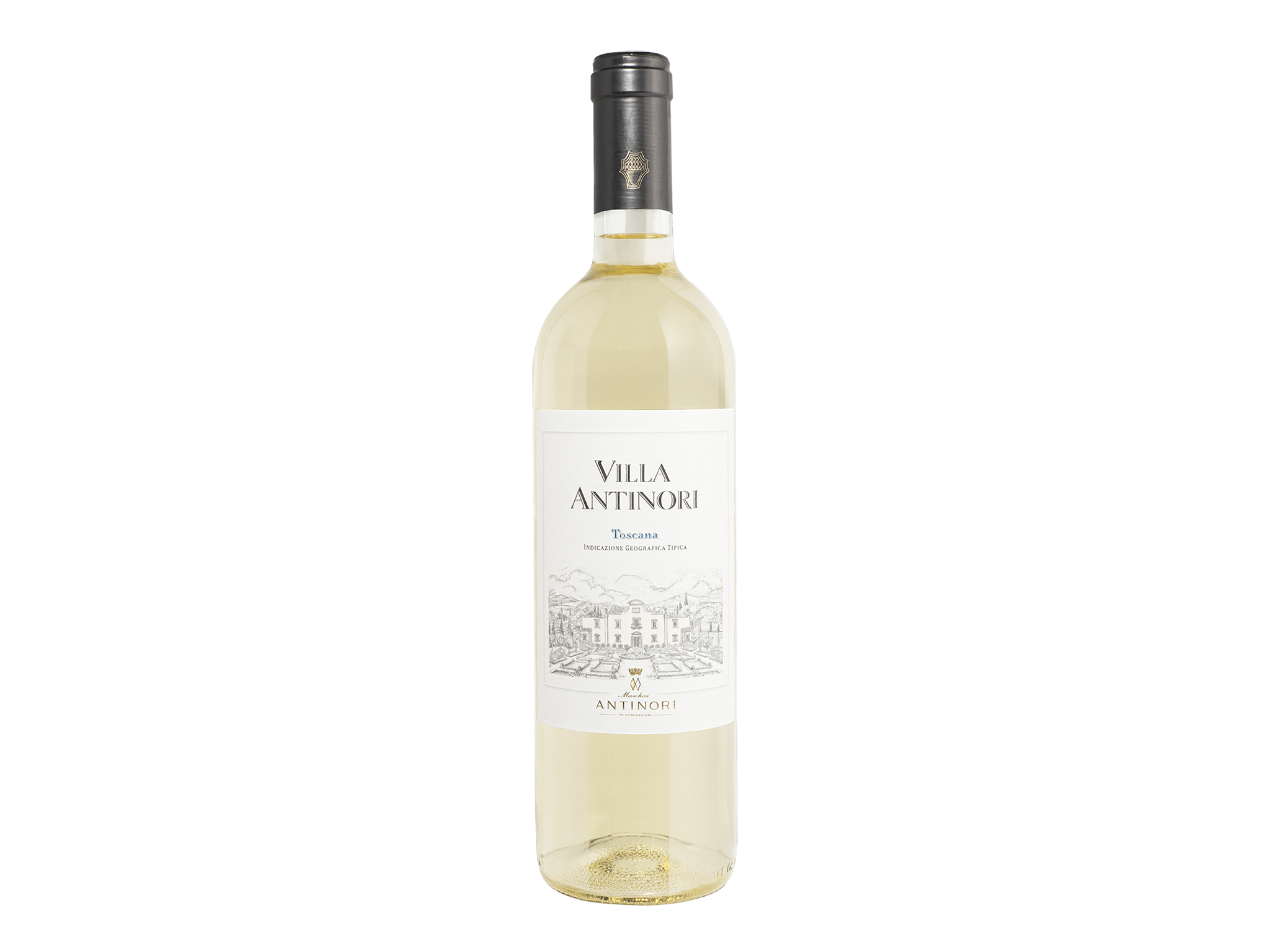
Best: Classic white
Rating: 9/10
- ABV: 12%
- Size: 75cl
A mainstay of Tuscan winemaking, the Antinori family has been making wine in Italy’s most picturesque region since 1385. Renowned for their high-quality wine and interest in new terroirs, they have been making this white wine since 1931, and the label is virtually unchanged since then. It is produced from traditional trebbiano Toscano grapes, which is one of the area’s most planted white wine varieties – and also used in the production of balsamic vinegar.
A small percentage of chardonnay was added to the wine in the 1980s to give it better structure, making this a delightfully aromatic and refined wine we couldn’t stop sipping. A bright straw yellow that looks like sunshine in a glass, it’s impossibly fruity and floral with a fresh mineral finish and an irresistible tropical twist from notes of banana, pineapples and orange blossom. We’d drink it in the garden while grazing on antipasti and dreaming of Tuscany.
Harvey Nichols pecorino 2020
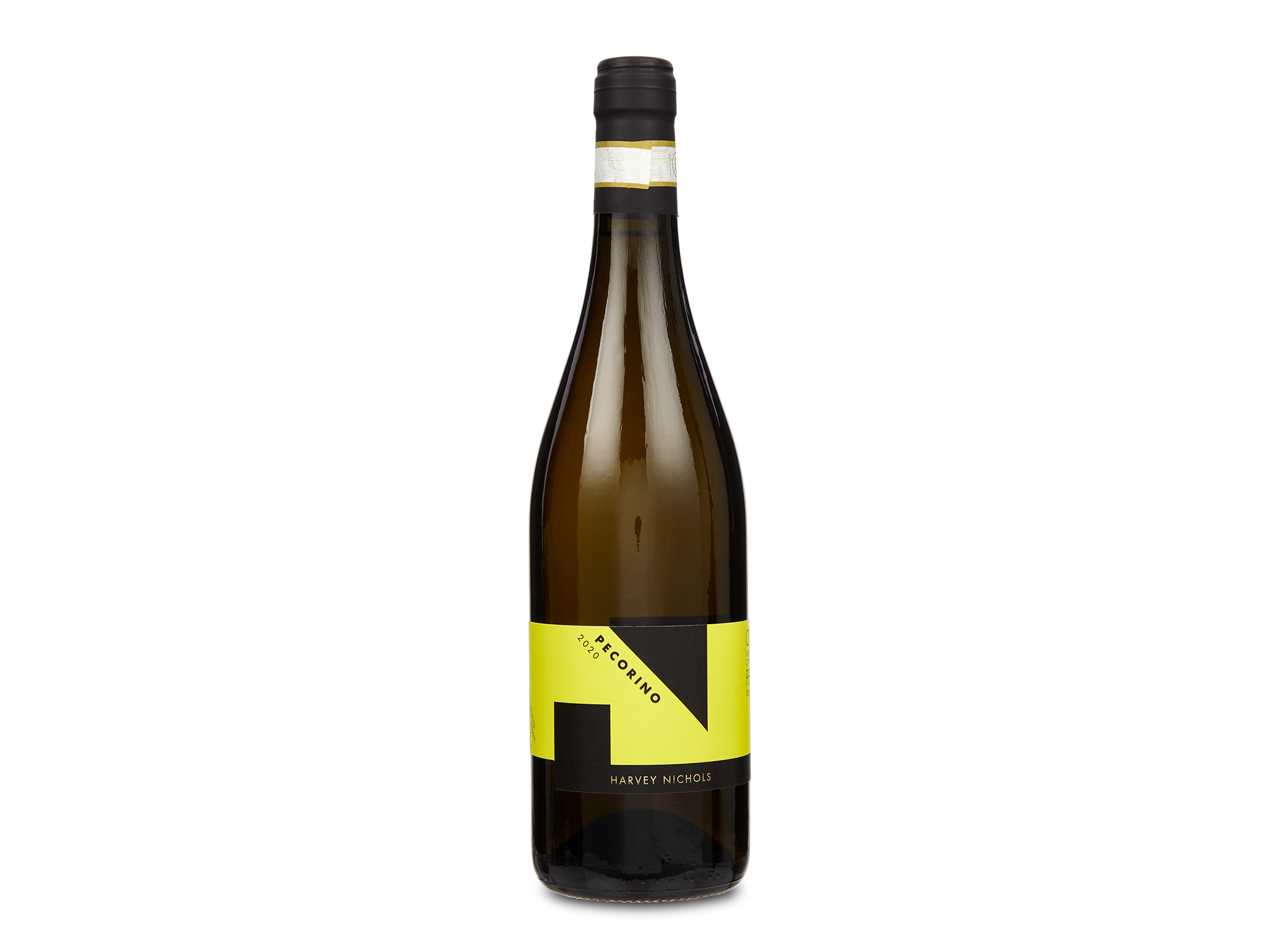
Best: New grape to try
Rating: 8/10
- ABV: 14%
- Size: 75cl
No, we’re not talking about the cheese of the same name. This intriguing and hardy grape is grown in Le Marche and Abruzzo, able to grow at altitude in the Apennine mountains and handle the cooler climate of the Adriatic coast. Though it has grown in Italy for thousands of years, it has only been used in serious winemaking in the last two decades and will charm anyone who loves a fruity, structured white that works well with almost any food.
This refreshing example comes from the organic Merlettaie vineyard where grapes are hand-harvested and naturally fermented in medium-sized oak barrels. An additional six months resting on the lees brings added complexity and texture to make this a white worth saving for the weekend. With hints of peach and apricot, it would make seafood sing or work alone as a pre-dinner delight.
When only red will do, we also loved Harvey Nichols premium rosso di montalcino 2019 (£26.50, Harveynichold.com), a limited-edition wine that thrills with unexpected spices, heavy violet and rose aromas and even a curiously irresistible note of leather.
M&S garganega pinot grigio, case of 6
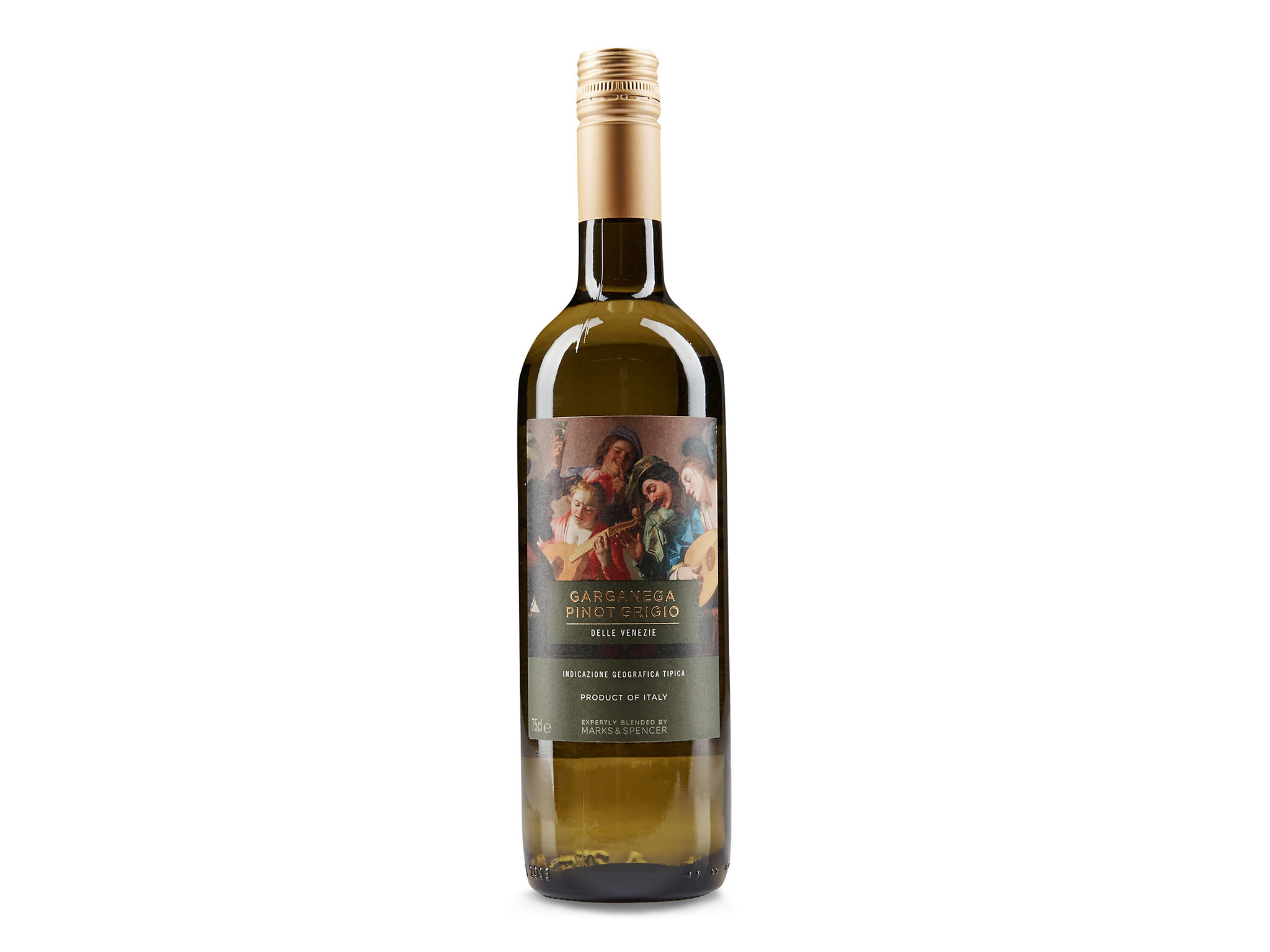
Best: To go with anything
Rating: 7/10
- ABV: 12.5%
- Size: 75cl
If you don’t know your gavi from your greco but just want a reliable white wine that goes well with food – but could also be drunk all on its own – pinot grigio is always a safe bet. Largely produced in Italy’s northeast, it is one of the country’s most successful wines and is loved for its crisp and dry drinkability.
This bottle comes with a twist, as 85 per cent of its grapes are actually the lesser known garganega, grown in the same region, alongside 15 per cent of pinot grigio grapes. Fresh and unoaked, it is produced by a grower’s cooperative in the village of Monteforte d’Alpone in the eastern part of the province of Verona. Though pinot grigio and garganega are usually typified by their tart apple and lemon flavours, this one adds sprightly lime and almond flavours that would go beautifully with grilled fish.
Prefer a red? M&S puglia rosso (£42 for case of 6, Marksandspencer.com) is a real juicy crowd-pleaser that goes hand-in-hand with classic Italian tomato dishes.
Villa Longobardi chianti
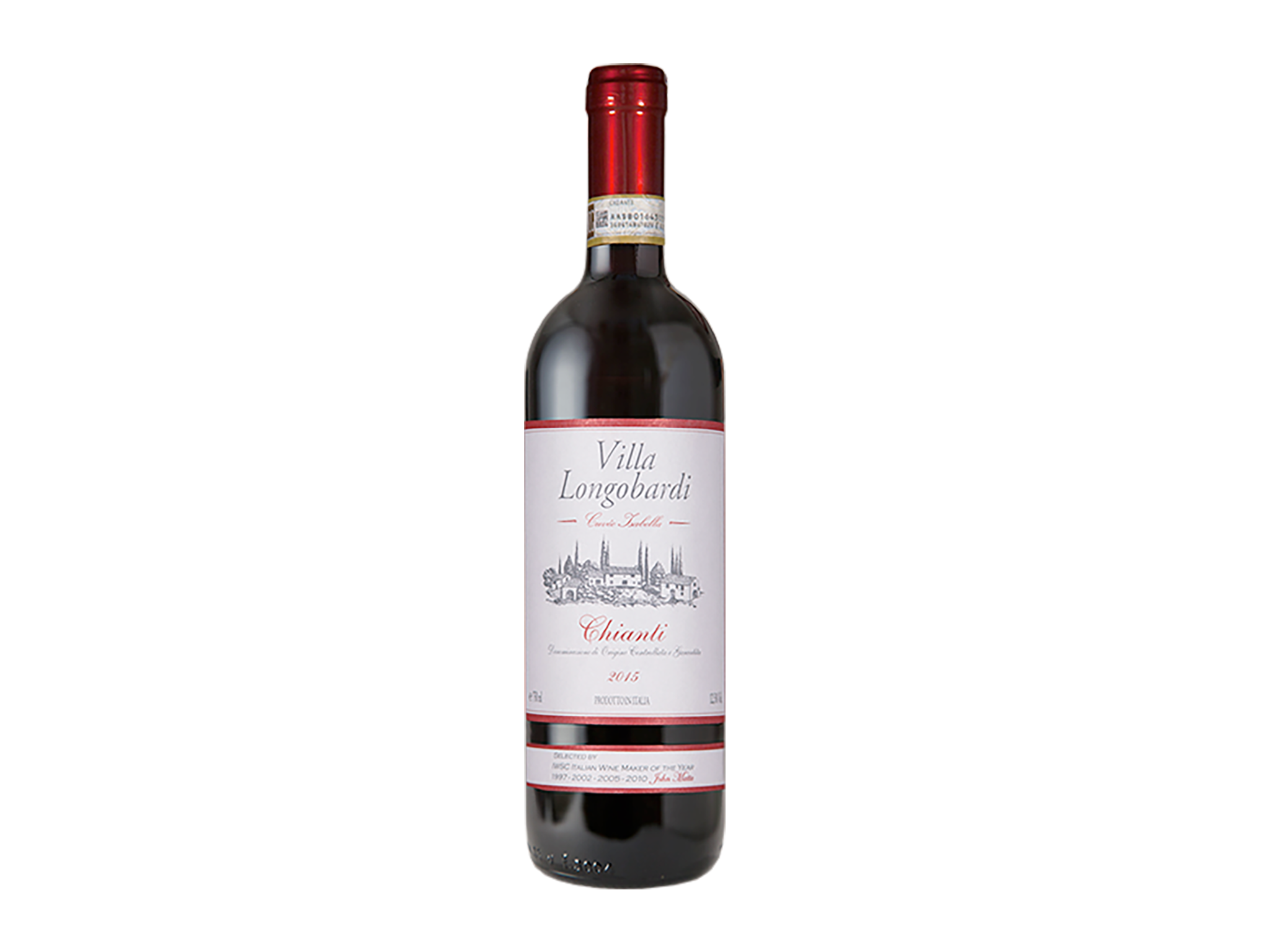
Best: With tomato pasta
Rating: 7/10
- ABV: 12.5%
- Size: 75cl
There’s a good reason Italian restaurants always offer chianti. With high acidity and a striking tartness, it is made to be drunk with Italian food and is a match made in heaven with any tomato-based dish.
Produced in the rolling hills of Tuscany just south of Florence, chianti must be made from a minimum of 70 per cent sangiovese grapes (or 80 per cent for chianti classico). This one looks tempting even in the glass, with a bright ruby red colour and floral aromas with just a hint of oak. Made by respected winemaker John Matta, it’s a wonderful example of a classic chianti, with firm tannins, a hit of cherries and a gentle trace of smokiness. Crack it open with an Italian feast and enjoy.
Antinori Cervaro della salla 2020, case of 6
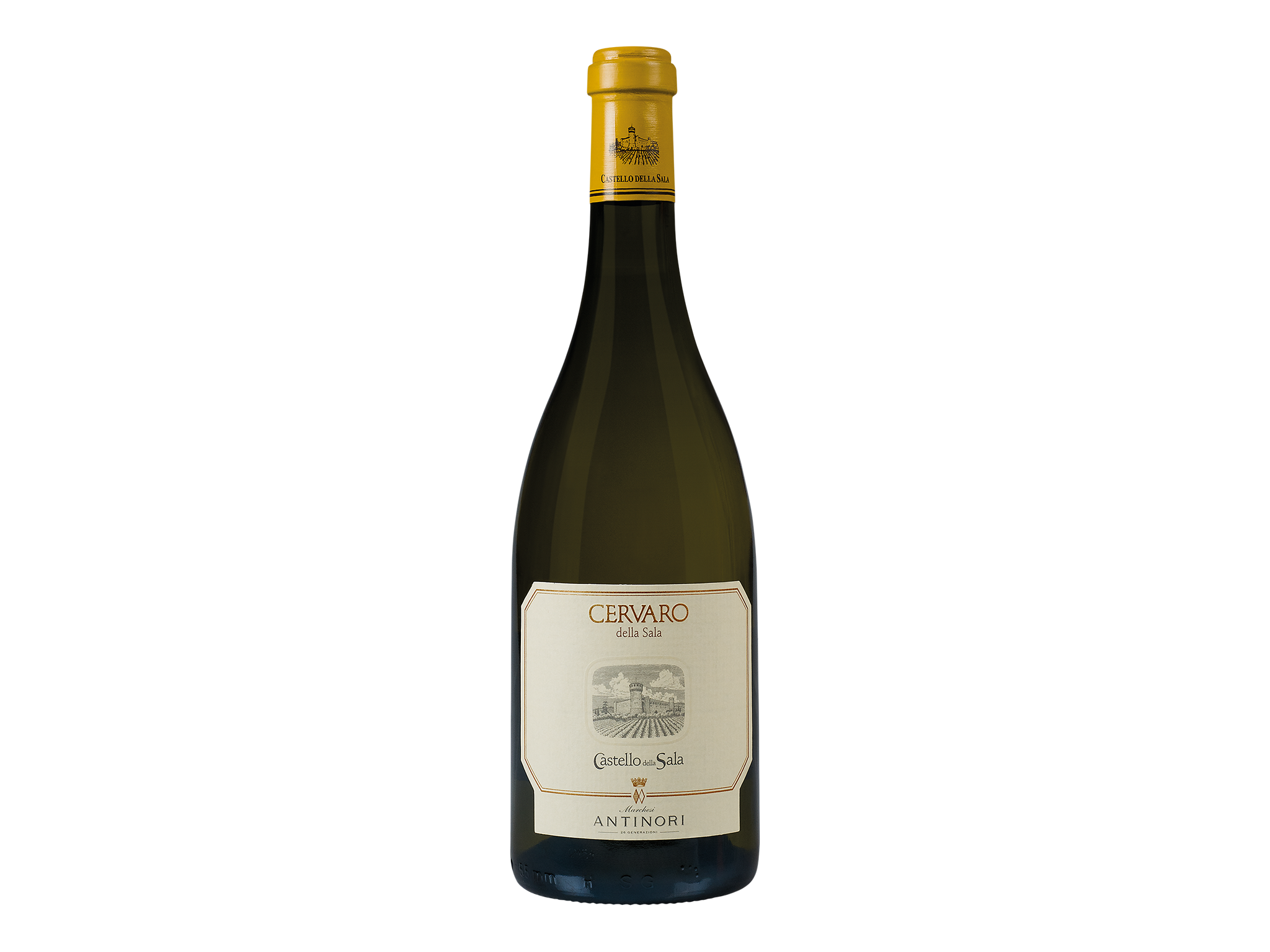
Best: For a special occasion
Rating: 9/10
- ABV: 12.5%
- Size: 75cl
Another offering from the historic Antinori winery, this is no ordinary weekday white. Produced in Castello della Sala in Umbria around 18km from the city of Orvieto, it was first made in 1985 with the aim of crafting a white wine that was able to age over time. It was also one of the first Italian white wines to have malolactic fermentation – where tart malic acid is converted to lactic acid – and to be aged in barriques.
Over 30 years later, the impressive white is still head and shoulders above the rest. A barrel-fermented chardonnay blended with a touch of grechetto, this elegant wine is a product of the remarkably dry weather of 2020, giving fruit stand-out aromas and stunning freshness. It was aged in the bottle for several months before being made available and has intense notes of citrus fruits, acacia blossoms and vanilla, with a rich mineral palate. If anyone tells you Italians make better red than white, just direct them towards this world-class wine to make them eat (or drink) their words.
The verdict: Italian wines
There’s a very good reason Italian wine is always popular and none of these bottles will leave you disappointed. Borgogno no name langhe nebbiolo is particularly special, a silky, flavourful reminder that what’s inside the bottle always matters more than what might be on the label. If you’re looking for a white instead, the Villa Antinori bianco Toscana IGT 2021 is an excellent choice at a very reasonable price.
Voucher codes
For discounts on wine and offers on alcohol, try the links below:
You don’t have to look abroad for fine wine, these are the best sparkling wines from English soil
